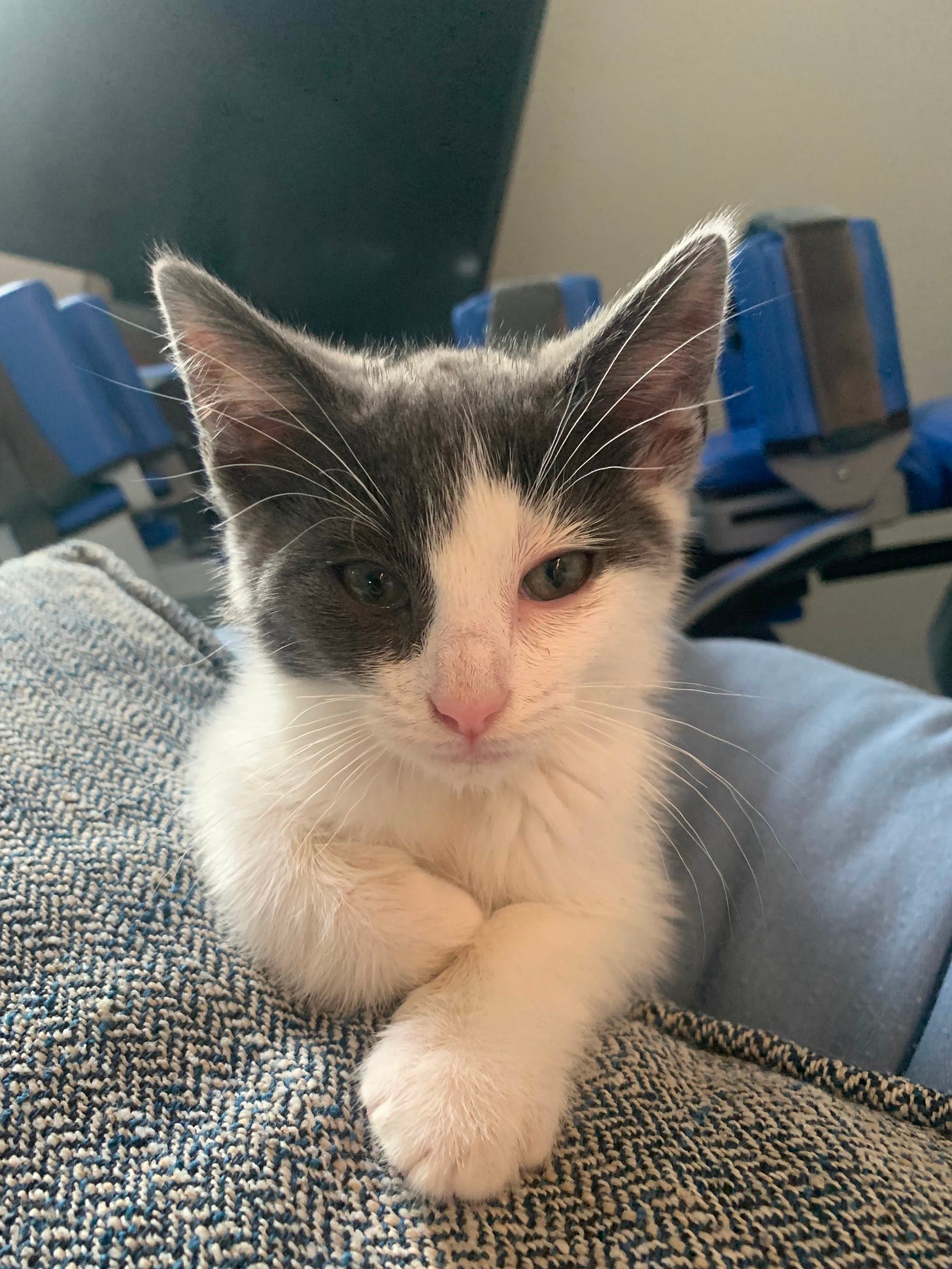Designed to Survive
How evolution shaped our appetite

Kittens are on my mind. We currently have two 8-week-old foster kittens frolicking through our house, spreading joy and cat litter in their wake.1
Naturally, this week's hangry cat meme had to make an appearance in the newsletter — because let’s be honest, we’ve all had cravings that felt that intense.
The term “food noise” has gained popularity recently, particularly with the rise of GLP-1 medications such as Ozempic and Mounjaro. I loved the phrase the first time I heard it because it perfectly captures that persistent, nagging desire to eat that so many of my patients describe.
Food noise is like a cranky toddler: the longer it's ignored, the louder it gets.
Yes, there may be ways to prevent and quiet the tantrum. But too often, people blame themselves when it shows up:
“I need more willpower.”
"I have no self-control."
"I need to be more disciplined."
My goal is to help patients reclaim a sense of agency, not by blaming themselves, but by understanding that their appetite isn’t broken. It’s doing exactly what it was designed to do.
The body learned to survive in an environment of scarcity, not excess. The survival of your not-so-long-ago ancestors relied on having enough energy (a.k.a., calories) to grow and reproduce, and they developed some clever ways to make do in less than ideal circumstances.
The ability to store energy was critical for survival back then. Nowadays? Not so much.
You may not think that storing body fat is an advantage today, but in an environment where having enough food was not guaranteed, being able to use previously stored energy is pretty ingenious.
And that is all that body fat is: a storage system. Not a character trait. In fact, there is a theory that some inherited “thrifty” genes from ancestors who were resilient to famine — the folks who survived despite conditions of starvation because of the fact that they were so good at saving energy for later.
To support this handy storage system, your body employs a beautiful orchestra of appetite-related hormones that encourage you to make the effort to seek out food energy — before on-demand food delivery was a thing — and to save every last bit of unused energy for later.
First up is ghrelin, the hunger hormone. Ghrelin increases with an empty stomach and when your blood sugar falls quickly. Ghrelin also increases during times of chronic stress and poor sleep, driving cravings for high-energy foods, all in the spirit of survival.
If ghrelin is the hormone that presses on the gas pedal of your appetite, leptin is meant to be the brake. As the fullness hormone, leptin levels increase as body fat storage rises, which signals that your body has enough energy in storage. It is no surprise, then, that leptin was once a hot area of obesity research. Yet it turns out that leptin signals only work to decrease appetite for so long, and then the body starts tuning out these messages. This is known as leptin “resistance.”
As the transport hormone, insulin has the busy task of shuttling energy that has been digested and absorbed into the bloodstream to muscles throughout the body and sends anything leftover to fat cells for later use.2 The system works beautifully until it gets overworked, resulting in insulin resistance (sound familiar?), which your body compensates for by producing more insulin, which in turns stores more body fat.
To highlight just how important appetite is for survival, enter dopamine — the brain’s reward chemical. Ever wonder why you crave chips but not broccoli? Back when calories were hard to come by, your body learned to reward high-energy foods like fat, starch, and sugar. Broccoli wasn’t a problem — it just didn’t pack enough of an energy punch. But eat something calorie-dense, and dopamine lights up…making you want it again and again.
I’m constantly in awe of the body’s inner workings. It’s doing what it was designed to do — protect you.
Understanding this is the first step in shifting from frustration to compassion, and then to action.
Stay tuned for practical ways to support your body’s survival instincts, even in times of plenty.
Thank you for being here,
~Allison
Insulin is most familiar to people in the context of diabetes, and for good reason — insulin manages blood glucose (“sugar”) levels (which I refer to as energy in the body of the post). When an individual produces little to no insulin (Type 1 diabetes), they require insulin administration for life. and require insulin to be administered for life. In the more common Type 2 diabetes, the body makes enough insulin but doesn’t use it well. It’s a condition that can be managed with lifestyle and sometimes medication interventions.




Great article Allison! Thank you!
Good info, well written Allison!